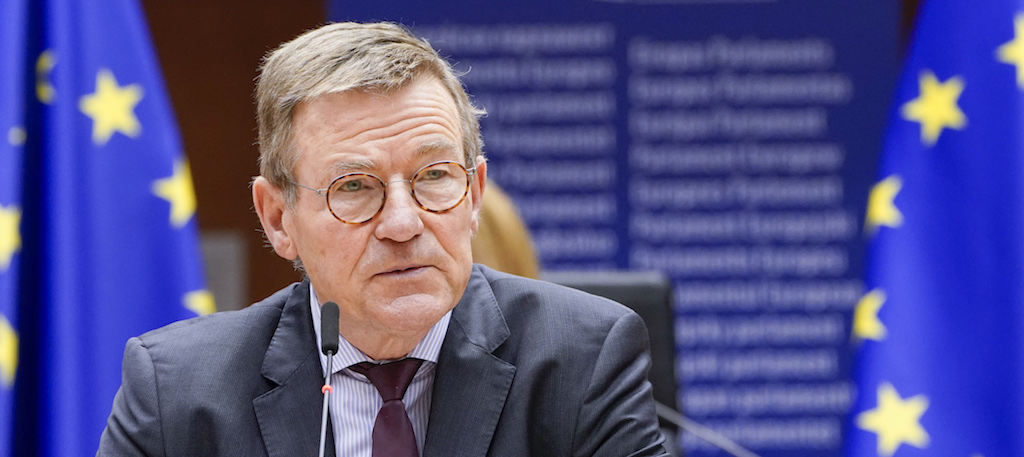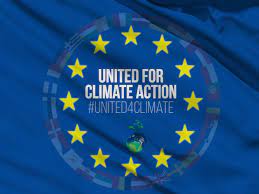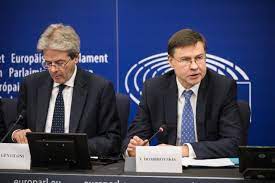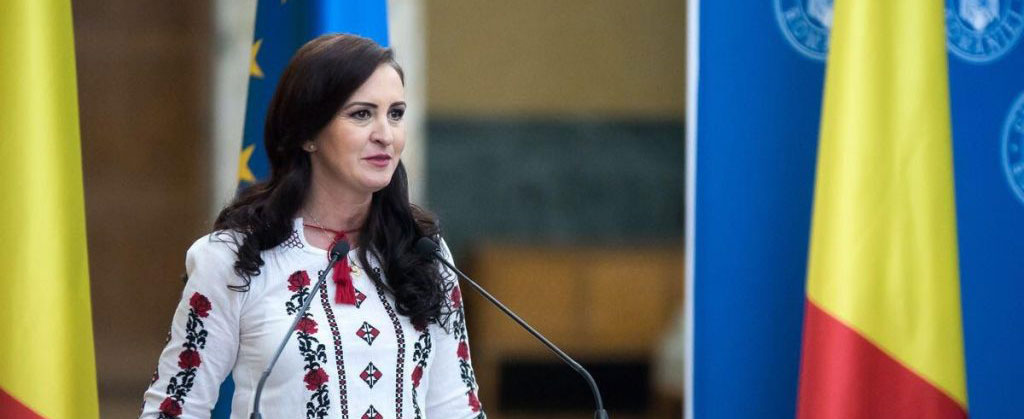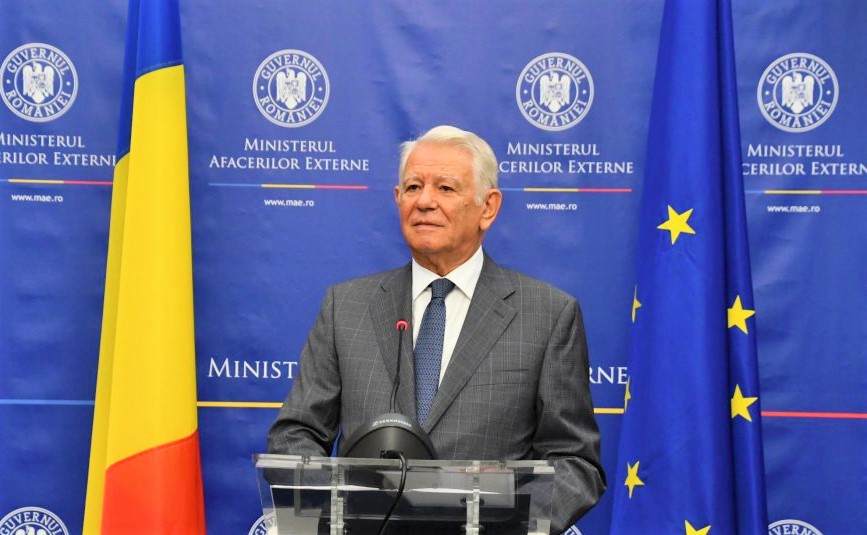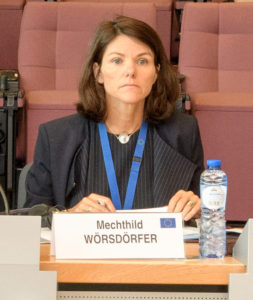
How will renewable energy and energy efficiency contribute to the EU’s 2030 target to reduce net greenhouse gas emissions by at least 55%?
The energy sector accounts for 75% of the EU’s greenhouse gas emissions. Saving energy through energy efficiency measures and the massive scale up of renewable energy are key to decarbonising the economy – whether in buildings, industry, transport or other sectors. Both measures directly reduce emissions, air pollution and dependency on fossil fuels.
The cheapest and cleanest energy is the energy we don’t use, which is why the Commission is proposing to write the energy efficiency first principle into EU law and to strengthen energy efficiency measures with the revision of the Energy Efficiency Directive. By using less energy, we lower the cost of the green transition, we lower our household bills and use less natural resources.
The EU is today a frontrunner on renewable energy and has already taken significant measures to boost its use. Across the EU, the share of renewable energy in final energy consumption has increased from 9.6% in 2004 to 19.7% in 2019. Currently, 34% of our electricity comes from renewable sources.
Two things are necessary to increase the share of renewable energy: investments in existing and new renewable energy technologies to increase production (and further reduce production costs); and creating an energy system able to integrate large shares of renewables for end users as efficiently as possible. These needs are addressed in the Commission’s proposal to revise the Renewable Energy Directive, which will provide certainty to investors through increased support to renewables in the sectors where progress has not been fast enough and specific promotion of the use of renewable fuels such as hydrogen in sectors that are hard to decarbonise. Additional measures to make permitting processes more efficient and to further promote direct contracts between producers and consumers will also increase the attractiveness of renewable energy projects for private investors.
How will renewable energy and energy efficiency contribute to other parts of this package?
Energy is also at the heart of other parts of the package of proposals presented today. Adjusting the minimum levels of taxation to the carbon content of energy carriers, as proposed in the revision of the Energy Taxation Directive will make cleaner fuels financially more attractive and will further incentivise the switch to renewables (see Memo). Similarly, the strengthened EU Emissions Trading System for industry and power generation and the new emissions trading for transport and for fuels used in buildings will provide a strong price signal to reduce energy use and increase the share of renewable energy in electricity production, industry and transport (see Memo). The Carbon Border Adjustment Mechanism will ensure that carbon leakage in electricity and industry is addressed in a way that incentivises and rewards ambitious climate and energy policies (see Memo). The Alternative Fuels Infrastructure Regulation, CO2 emissions standards for cars and vans, and the initiatives for sustainable aviation and maritime fuels are also closely intertwined with energy policy (see Memo). By the end of the year, the Commission will also propose to revise the Energy Performance of Buildings Directive, and lay out concrete measures to decarbonise gas and support the emerging hydrogen market, and to reduce methane emissions.
Will the revised Renewable Energy Directive increase targets at EU and national level?
In 2019, the share of renewable energy in the EU as a whole was 19.7% – well on track to achieve the collective 20% target by 2020. However, progress has varied widely from one Member State to another (Eurostat, 2019). The 2018 Renewable Energy Directive set a 2030 target of at least 32% of renewables in the EU energy mix, based on national contributions. When Member States submitted their National Energy and Climate Plans (NECP) in 2020, the cumulative impact of the 27 plans already went beyond this figure, adding up to a projected renewables share of 33.1-33.7%, based on the announced measures.
However, with the increase in climate ambition – to achieve a 55% net greenhouse gas emissions reduction by 2030, compared to 1990 levels – it is clear that the EU target needs to be more ambitious. Today’s proposal raises the binding EU-level target for renewables to 40%. Member States will need to increase their contributions in order to collectively achieve the new target, building on the ambition outlined in their respective NECP.
How will the Renewable Energy Directive promote the use of renewable energy?
All renewable energy sources are needed to meet the EU’s 2030 emission reduction target and reach climate neutrality by 2050. The proposal does not prescribe which technologies should be used, but does set targets for the main economic sectors contributing to energy demand:
- It increases the renewable targets:
- for transport (13% greenhouse gas intensity reduction)
- for heating and cooling (annual binding increase of 1.1 percentage point at national level)
- It establishes indicative targets:
- for industry (1.1 percentage point annual increase in renewable energy use)
- for buildings (at least 49% renewable energy share)
The Directive also gives an additional push to advanced biofuels and introduces sub-targets for renewable hydrogen and hydrogen-based synthetic fuels:
- in transport (2.6% for renewable fuels of non-biological origin)
- in industry (50% renewable share in hydrogen consumption)
These targets are aligned with the EU Hydrogen Strategy ambition of rolling out 40GW of electrolyser capacity by 2030.
In line with last year’s EU Energy System Integration strategy, the revised Directive addresses barriers to specific technologies that are key to a more integrated circular energy system – such as district heating – and promotes the use of renewable electricity in transport and the heating and cooling sector, as well as renewable hydrogen, which is necessary for sectors that are difficult to electrify.
The Commission is proposing to put in place an EU-wide certification system for renewable fuels (including hydrogen) to support the deployment of an adequate energy mix able to deliver on the EU’s increased climate ambition.
When it comes to the deployment of offshore renewable energy across the EU, the current directive includes options for Member States’ cross-border cooperation on a voluntary basis. The proposal is stepping up the requirements to ensure the development of joint pilot projects. In addition, the Commission will prepare guidance on permitting to ensure a speedy enforcement of the current rules and setting best practices.
How will the Commission ensure that bioenergy is sustainable?
Bioenergy is a key part of the EU energy system, representing 12% of the overall energy mix and 60% of renewable energy consumption. Sustainable use of bioenergy contributes to the decarbonisation of the EU economy.
Climate neutrality will require increasing amounts of renewables and sustainable bioenergy will continue to play an important role. This is particularly important for hard-to-abate sectors in the context of an integrated energy system (e.g. heavy-duty transport and in industry). For several Member States, bioenergy is also indispensable as they transition away from fossil fuels towards cleaner energy sources.
The EU sustainability criteria for bioenergy were already significantly reinforced in the 2018 Renewable Energy Directive in order to reduce the risk of unsustainable bioenergy production and make sure that its use is efficient and results in high greenhouse gas savings. Its provisions cover biomass and biogas in heat and power, in addition to biofuels for transport. The directive also includes specific biodiversity and climate safeguards for forest biomass, which contributes around 60% of EU’s bioenergy.
With today’s proposals, the EU bioenergy sustainability criteria are further strengthened in line with the increased climate and biodiversity ambition of the European Green Deal:
- In order to further protect biodiversity-rich forests, the proposals prohibit the sourcing of woody biomass for energy production from primary forests, peatlands and wetlands, and only allows it from highly biodiverse forests when there’s no interfere with nature protection purposes;
- It further specifies the sustainability criteria on harvesting and the maintenance of soil quality and biodiversity;
- To minimise the use of quality roundwood for energy production, undue distortive effects on the biomass raw material market and harmful impacts on biodiversity, the proposal promotes using biomass according to its highest economic and environmental added value (so-called cascading use). It prohibits national financial incentives which support the use of saw logs, veneer logs (high quality wood), and stumps and roots (that are important for the soil) for energy generation, and, under certain conditions, the production of electricity from forest biomass in electricity-only-installations;
- A future Delegated Act will set out which practices are considered to be in line with the cascading principle for minimising the use of quality roundwood for energy production, with due regard to national specificities. Further limitations regarding support schemes to forest biomass may be considered in the future, on the basis of a report on their impact on biodiversity and market distortions;
- To promote higher greenhouse gas savings, the directive will require all biomass-based heat and power installations to comply with minimum greenhouse gas saving thresholds. Currently this only applies to new installations;
- The EU sustainability criteria for biomass should in the future apply to smaller heat and power installations (equal or above 5MW) rather than the 20 MW threshold under the current directive.
These new measures will further ensure the sustainability of forest biomass used for energy production in the EU. They will also promote more resource-efficient use of biomass, minimising the risk of diversion of high quality roundwood away from high value uses such as construction or furniture making.
Underlining the importance of trees for the climate, and the environmental and economic benefits they provide, today’s package also includes the new EU Forest Strategy aimed to increase EU forest area.
How does the Renewables Directive contribute to decarbonising buildings?
Buildings consume 40% of energy used in the EU and generate around 36% of energy-related emissions. Around 80% of the energy consumption in buildings is for heating and cooling, while the rest goes to lighting and electric appliances, such as washing machines, fridges or dishwashers. Most of the energy consumed in buildings still comes from fossil fuels, including 76% for heating and cooling.
This is why the revised Renewable Energy Directive, in line with the Renovation Wave Strategy, introduces more targeted measures to speed up the shift of buildings’ heating and cooling systems to renewable energy as part of the retrofitting of buildings. It sets an objective to reach at least a 49% renewable share in the energy used in buildings by 2030. This objective can be fulfilled by direct electrification (such as using renewable electricity from wind and solar or supplying heating and cooling via heat pumps), direct renewable heat (e.g. geothermal and ambient energy, solar thermal, etc.), or district heating and cooling, which can use renewable energy sources as well as waste heat and cold from industrial and service sector processes.
The proposal makes mandatory the current renewable heating and cooling target of a minimum annual 1.1 percentage point increase, with additional indicative national top-ups to guide lagging Member States. The support measures available will be broader, including planned replacement schemes of heating systems or fossil phase-out schemes with milestones; local and regional heat planning; and heat purchase agreements that groups of small consumers can establish.
The revised Directive also ensures that modern district heating and cooling systems are developed to harness local renewable energy, such as geothermal, ambient and solar thermal sources, and to cost-effectively integrate renewable electricity, renewable gases and liquids for the supply of buildings and other users. To drive the necessary investment, the proposal raises the indicative target for the annual increase in renewables used in district heating and cooling from the current 1.0 to 2.1 percentage points.
Will the transport sector have to use more renewables?
In 2019, the renewables share in the transport sector was only about 9%, and transport emissions are still on the rise. Electrification will play a big role in road transport, while clean hydrogen and hydrogen-based synthetic fuels as well as advanced biofuels will be crucial for decarbonising the aviation and maritime sector. The proposal specifically promotes renewable fuels that achieve the highest greenhouse gas emission savings, setting out a 13% target for the reduction of the emission intensity of transport, including international aviation and maritime transport fuels. It increases the ambition level for advanced biofuels to 2.2% of the transport sector’s energy consumption and introduces a 2.6% target for hydrogen and hydrogen-based synthetic fuels in the sector.
The proposal also introduces new incentives for the deployment of the infrastructure needed by electric vehicles as it requires the Member States to introduce a credit mechanism which allows charging point operators to contribute towards the target. These measures are complementary to the proposed stricter CO2 standards for cars, the proposal for the revised deployment of alternative fuels infrastructure legislation, as well as proposals on promoting the use of renewable fuels in the maritime and aviation sectors.
What targets has the Commission proposed at EU and national level for energy efficiency improvements?
The proposal raises the level of ambition of the EU energy efficiency target and makes it binding. The Energy Efficiency Directive requires Member States to collectively ensure that energy consumption is reduced by at least 9% by 2030 compared to the 2020 reference scenario. This 9% target is equivalent to the 39% and 36% energy efficiency targets for primary and final energy consumption included in the Climate Target Plan, but is simply measured against updated baseline projections made in 2020.
The new target corresponds to a maximum primary energy consumption of 1023 million tonnes of oil equivalent [Mtoe] and final energy consumption of 787 Mtoe by 2030. Final energy consumption represents energy consumed by end-users, while primary energy consumption also includes what is used for the production and supply of energy.
Member States will contribute to achieving the overall EU target through indicative national contributions based on benchmarks of a combination of criteria, which reflect each country’s national circumstances. These include energy intensity, GDP per capita and energy savings potential to complement the fixed rates of energy reduction. Enhanced ‘gap-filling mechanisms’ will be triggered when countries fall behind in delivering their national contributions.
Energy efficiency gains across the economy will count towards the headline Energy Efficiency Directive target of 9%, including those achieved as a result of faster deployment of renewables, more ambitious CO2 standards for cars and ETS application to new sectors. In addition, the proposal nearly doubles the annual energy savings obligation which needs to be met individually by all Member States in addition to the savings they achieve through the implementation of EU legislation. The energy savings obligation is one of the main policy instruments to ensure that the European economy is more energy efficient. Member States will be required to achieve new savings of final energy consumption of at least 1.5% each year from 2024 to 2030, up from current 0.8%. This is an important instrument of the Energy Efficiency Directive, helping to drive active energy savings in end-use sectors such as buildings, industry and transport, and therefore contributing to the overall EU target.
What role will the public sector play in promoting energy efficiency?
The public sector has an important role to play in promoting energy efficiency – firstly to serve as a model for businesses and citizens to follow, but also because of the high level of energy consumption in public buildings and services. The Commission estimates indicate that public sector activities – education, health and social services, public transport, water supply and treatment, and street lighting – together they use about 50 Mtoe annually, which is 5% of EU final energy consumption. For these reasons, the proposal includes a specific obligation for the public sector to achieve an annual energy consumption reduction of 1.7%.
In addition to this, Member States are required to renovate each year at least 3% of the total floor area of buildings owned by all levels of public administration. Public bodies will also need to systematically take into account energy efficiency requirements in their public procurement of products, services, buildings and works.
Public authorities should promote the use of energy performance contracting in particular for large non-residential buildings (above 1,000 m2) due for renovation. In order to remove barriers to energy performance contracting, Member States need to establish one-stop shops and advisory services by supporting energy service companies (ESCOs) and their clients to prepare the projects and identify best solutions for financing. Availability of skills and training for energy efficiency professions are also important. The proposal therefore includes stronger requirements to ensure that these skills are regularly assessed.
How will you promote energy efficiency for consumers, home owners and tenants?
Targeted energy efficiency measures are an effective way to alleviate energy poverty, as they reduce overall energy use and bills. Replacing windows and insulating walls can provide considerable savings and improvements in the quality of life of citizens. Each Member State will have to ensure that a specific share of energy savings is focused on vulnerable consumers, people affected by energy poverty and people living in social housing. The share of efforts to be focused on the most disadvantaged communities will reflect the share of the population falling into this category in each Member State. It will require early and effective energy efficiency improvement measures, also for addressing any possible distributional effects stemming from applying the Emissions Trading System to buildings.
Building renovation is a high priority in the EU’s €672.5 billion Recovery and Resilience Facility and figures prominently in the respective national plans. The Commission is proposing to set up a new Social Climate Fund which supports investment in decarbonisation of buildings and transport, while tackling energy poverty.
Today, in most cases when a building needs renovating, there are no rules for a fair and reasonable division of costs and benefits between property owners and tenants. The proposal strengthens the obligation for Member States to remove barriers which are known as ‘split incentives’ between owners, who usually need to pay for energy efficiency measures, and tenants, who can directly benefit from them.
The proposal requires EU countries to put in place consumer protection and awareness-raising measures and to support a multilateral dialogue between owners and tenants organisations, consumer organisations, renewable energy communities, citizen energy communities and local and regional authorities. This dialogue should result in proposals for measures acceptable for all, and necessary incentives and guidelines. The revision of the Energy Performance of Buildings Directive later this year will also look at introducing minimum energy performance standards that are effective in addressing renovation in the context of split incentives.
The lack of knowledge about the potential benefits from energy efficiency improvements is an important obstacle to investment. The proposal therefore mandates Member States to establish one-stop shops where consumers will be able to obtain information and assistance on why and how to save energy.
How will the energy transition be financed?
To reduce greenhouse gas emissions by 55% by 2030, compared to 1990 levels, the EU will need to invest an estimated €392 billion more each year in the energy system than it did in the period 2011-2020. Energy efficiency faces one of the largest investment gaps, estimated at around €165 billion. These are additional investments needed every year in the building sector (renewable energy sources and energy efficiency) between 2021-2030 due to the increased climate target.
The bulk of necessary investments will have to come from private funds and we are already seeing an increase of private funding relying purely on market revenues. That said, public funds continue to play an important role in unlocking private investment. There is a number of new and existing programmes under the Multiannual Financial Framework and the NextGenerationEU to support the energy transition.
The main EU instrument that will support investments in the energy transition in the immediate future will be the €672.5 billion Recovery and Resilience Facility, at least 37% of which must be dedicated to climate action. Many Member States have confirmed their intention to spend significant amounts on energy efficiency and renewable i in their national recovery and resilience plans, specifically targeting worst performing buildings and energy poor households.
In addition to this, 30% of the multi-annual EU budget from 2021 to 2027 is dedicated to climate-related spending. A significant share of Cohesion Policy funds will continue to be channelled to renewables, energy efficiency and buildings renovation. InvestEU will mobilise, through the dedicated financial instruments and technical assistance such as the ELENA Facility, private and public investments in all EU countries.
The Just Transition Fund, with an overall budget of €17.5 billion, will alleviate the social and economic costs resulting from the transition to a climate-neutral economy, including through investments in renewables, energy efficiency and buildings renovation that will have the multiple benefits of creating local jobs, reducing pollution and addressing energy poverty in a durable manner.
The centrally managed programmes like LIFE or Horizon Europe, will have dedicated funding priorities supporting a just green transition, in line with their overall objectives.
Under the ETS proposal, all auction revenues at EU and national level have to be channelled to green investments, including investments in energy efficiency measures and renewables. The proposed Social Climate Fund will in particular support vulnerable households to finance energy renovations and other measures reducing their energy consumption and enabling a switch to renewables.






